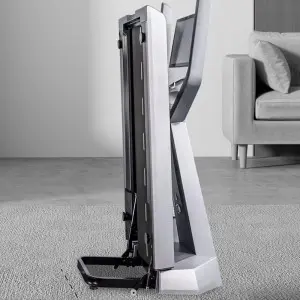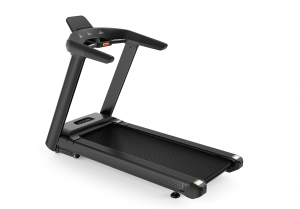Rehabilitation training after sports injuries often requires scientific guidance and appropriate equipment assistance. In addition to traditional rehabilitation methods, home treadmills and handstands are becoming effective tools for many people to restore their physical functions with their unique features. How to use them correctly to accelerate recovery? The following is a detailed analysis for you based on the principles of movement and professional suggestions.
First, treadmill: Low-impact training helps restore joints and muscles
For people who suffer from knee and ankle joint injuries or lower limb muscle strains due to running, jumping or long-term overuse, the low-speed brisk walking mode of the treadmill can significantly reduce the burden of exercise. Compared with outdoor ground, the shock absorption system of the treadmill can effectively buffer the impact force when landing, reduce the pressure on the joints, and avoid secondary injuries. For instance, in the early stage of rehabilitation for patients with meniscus injury, by setting a lower speed (3-5 km/h) and a shorter duration (10-15 minutes per session), and adjusting the slope, they can simulate climbing movements, gently activate the leg muscles, promote blood circulation, and gradually restore joint flexibility.
In addition, the precise speed and distance control function of the treadmill can help rehabilitated patients gradually increase the intensity of their training. Rehabilitation therapists usually suggest that after each training session, adjustments should be made based on whether there is swelling or pain in the joints. If discomfort occurs, the speed should be immediately reduced or the duration shortened. At the same time, when combined with the arm-swinging movement during walking, it can also engage the upper limbs and core muscle groups, promoting the recovery of overall coordination.
Second, the handstand machine: Relieves spinal pressure and improves lumbar strain
Sitting for long periods, bending over to carry heavy loads or acute sprains of the waist can easily lead to problems such as lumbar muscle strain and lumbar intervertebral disc protrusion. The inverted machine, through an anti-gravity posture, turns the body upside down and uses gravity to naturally pull the spine, widen the intervertebral Spaces, reduce the pressure on the intervertebral discs, and alleviate the symptoms of nerve compression. For those with mild lumbar discomfort, when initially using it, the handstand Angle can be controlled at 30° – 45°, and held for 1-2 minutes each time. After gradually getting used to it, the time can be extended. For severe patients, it is necessary to start from around 15 degrees under the guidance of professionals.
During the process of handstand, blood flows to the head, which can promote blood circulation in the brain and waist, and accelerate the metabolism and repair of damaged tissues. Meanwhile, the auxiliary support design of the handstand machine can help the rehabilitated person maintain stability when upside down, reducing the risks caused by improper posture. However, the frequency and duration of handstand training should be strictly controlled. It is recommended to do it 1 to 2 times a day, with each session not exceeding 5 minutes, to avoid sudden blood pressure spikes or brain congestion.
Third, professional advice on rehabilitation training
1.Consult a professional: Before using a treadmill or a handstand machine, it is essential to consult a doctor or a rehabilitation therapist to determine the extent of your injury and the appropriate training plan, to avoid blind training that may aggravate your condition.
2. Gradual progress: Start with low intensity and short duration, gradually increase the training volume, and adjust the parameters based on the body’s feedback. For example, increase the speed by 0.5km/h per week when using a treadmill, and extend the handstand by 30 seconds each time.
3. In combination with other rehabilitation methods: Equipment training should be combined with physical therapy, stretching and relaxation, nutritional supplementation, etc. If you apply ice or heat after exercising and use a foam roller to relax the muscles, the effect will be even better.
4. Pay attention to the contraindicated groups: People with hypertension, heart disease, eye diseases, and pregnant women should not use the inverted machine. Those with severe joint injuries that have not healed should use treadmills with caution.
Treadmills and handstands offer flexible and convenient options for rehabilitation training, but science and safety are always the prerequisites. By making rational use of the characteristics of the equipment and in combination with professional guidance, they will become effective assistants to help the body recover and return to a healthy life.
Post time: Jun-16-2025



